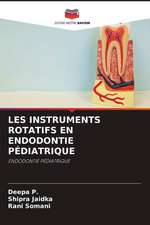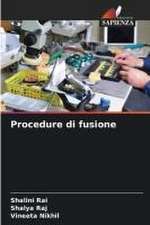A Guide to Good Occlusal Practice: BDJ Clinician’s Guides
Autor Stephen Daviesen Limba Engleză Paperback – 5 iun 2023
Today it remains the case that many dentistsfeel that occlusion represents an important gap in their knowledge; indeed, some qualify with little more than the belief that “occlusion is important”. Their vulnerability in this area of clinical practice is confirmed when early cases fail to go as well as hoped. In providing comprehensive guidance on good occlusal practice in different contexts, this book will be of value for a wide range of dental practitioners.
| Toate formatele și edițiile | Preț | Express |
|---|---|---|
| Paperback (1) | 711.40 lei 38-44 zile | |
| Springer International Publishing – 5 iun 2023 | 711.40 lei 38-44 zile | |
| Hardback (1) | 973.86 lei 38-44 zile | |
| Springer International Publishing – 14 mar 2022 | 973.86 lei 38-44 zile |
Din seria BDJ Clinician’s Guides
- 5%
 Preț: 1041.77 lei
Preț: 1041.77 lei - 5%
 Preț: 713.54 lei
Preț: 713.54 lei - 5%
 Preț: 713.54 lei
Preț: 713.54 lei - 5%
 Preț: 648.77 lei
Preț: 648.77 lei - 5%
 Preț: 1112.17 lei
Preț: 1112.17 lei - 5%
 Preț: 717.93 lei
Preț: 717.93 lei - 5%
 Preț: 1130.27 lei
Preț: 1130.27 lei - 5%
 Preț: 868.52 lei
Preț: 868.52 lei - 5%
 Preț: 421.26 lei
Preț: 421.26 lei - 5%
 Preț: 586.96 lei
Preț: 586.96 lei - 5%
 Preț: 635.29 lei
Preț: 635.29 lei - 5%
 Preț: 1438.47 lei
Preț: 1438.47 lei - 5%
 Preț: 714.49 lei
Preț: 714.49 lei - 5%
 Preț: 529.43 lei
Preț: 529.43 lei - 5%
 Preț: 702.04 lei
Preț: 702.04 lei - 5%
 Preț: 513.61 lei
Preț: 513.61 lei
Preț: 711.40 lei
Preț vechi: 748.84 lei
-5% Nou
136.12€ • 142.12$ • 112.66£
Carte tipărită la comandă
Livrare economică 01-07 aprilie
Specificații
ISBN-10: 3030792277
Pagini: 299
Ilustrații: XII, 299 p. 379 illus., 367 illus. in color.
Dimensiuni: 155 x 235 mm
Ediția:2nd ed. 2022
Editura: Springer International Publishing
Colecția Springer
Seria BDJ Clinician’s Guides
Locul publicării:Cham, Switzerland
Cuprins
Recenzii
Notă biografică
Textul de pe ultima copertă
Today it remains the case that many dentistsfeel that occlusion represents an important gap in their knowledge; indeed, some qualify with little more than the belief that “occlusion is important”. Their vulnerability in this area of clinical practice is confirmed when early cases fail to go as well as hoped. In providing comprehensive guidance on good occlusal practice in different contexts, this book will be of value for a wide range of dental practitioners.
Caracteristici
Descriere
This book considers occlusion within the different disciplines of clinical dentistry, taking into account the challenges specific to each, in order to develop guidelines of good occlusal practice (GGOP). The GGOP for each discipline has benefited from an authoritative contribution of a recognised specialist in that field. Readers will find full description of what constitutes good occlusal practice in, for example, simple and advanced restorative dentistry, removable prosthodontics, the restoration of the worn dentition and implantology. It is clearly explained why and how the GGOP differ in the various branches of dentistry, the key point being that it is the support for the occlusal surfaces that determines GGOP. One of the foundations of this work is that an occlusion can only be judged by the tissue reactions to it: there is no such thing as an intrinsically bad occlusion or malocclusion.
Today it remains the case that many dentists feel that occlusion represents an important gap in their knowledge; indeed, some qualify with little more than the belief that “occlusion is important”. Their vulnerability in this area of clinical practice is confirmed when early cases fail to go as well as hoped. In providing comprehensive guidance on good occlusal practice in different contexts, this book will be of value for a wide range of dental practitioners.










